The Dragon Keeper's Guide - Part 1 - Introduction & Known Breeds
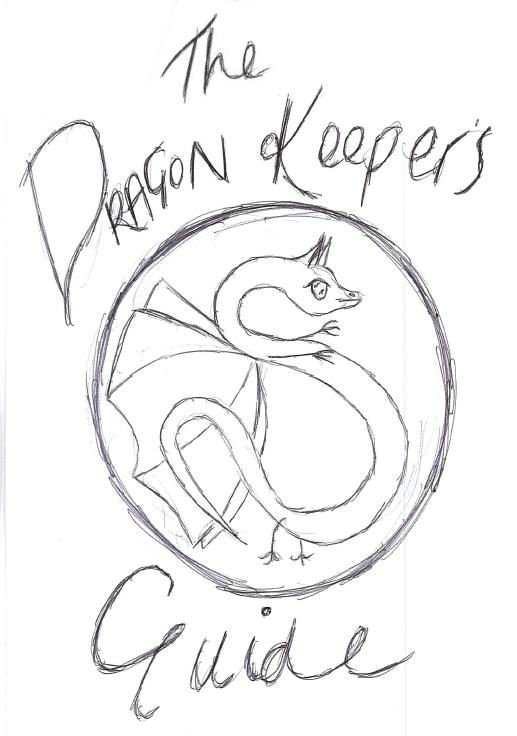
Dragons were first sighted in Norway by a British explorer in 1614. Darkness filled the sky, and the sounds of flapping wings reverberated in the air. Arthur Cambridge recorded sketching's of the dark weaving cloud in his journal, and although he never lived to tell the tale, his tale lived to be told. It was from the sketching’s of the late Arthur Cambridge the collective term a “cloud” of dragons was born.
Since this first recorded sighting, many breeds have been discovered in the remote parts of the world, although scientists estimate there must be another 2-5 breeds yet to be unearthed. At the time of publication, 12 of the 15 known breeds have been studied. The remaining 3 are yet to be recorded by scientists, and have only been observed on rare occasions by members of the public.
Most discovered species breathe fire; although relatively little is understood about how this process works. It has been established the dragons exhale a highly flammable gas that can ignite upon contact with air. Recent study has found this to be a compound known as arsine, chemical formula AsH3. It is believed this is produced by extracting arsenic from minerals and marine life, and combining it with hydrogen in the mixing gland. The mixing gland has a semi-permeable membrane which acts as a filter to extract hydrogen directly from the air. This produces a pyrophoric gas that allows the dragon to breathe fire at will. The dragon appears to be able to absorb the arsenic without suffering any ill effects from ingesting it. It will normally ingest the arsenic in mineral form by eating small, often volcanic, rocks although they seem to be able to supplement this with a diet high in fish.
Over the past 50 years, legislation such as the Dragons Act of 1972 have come in to place to protect dragons for future generations. This includes the provision of appropriate accommodation, inoculations, a healthy diet and responsible ownership as well as dragon registration and breeding certificates. All owners must register their dragon with the Lineage Association.
Known Breeds
It is very important to choose the right breed of dragon for you as some require large amounts of space or constant attention. Most dragons live over 20 years, meaning keeping one can truly be a lifelong commitment and many people do not realise the level of care involved when they get one as a pet.
Aodhfionn (L. Ignis Albens Humo)
The Aodhfionn (pronounced ey-fin) is predominantly found in Europe and is closely related to the Oyuhusa Atsila and Berapi Mati. Unlike its cousins, this member of the Humo family is the only one that does not live in the Pacific Ring Of Fire, and is instead found mainly in Turkey, Italy, Spain, Germany and Greece, although has been sighted in other parts of Europe. Growing to about 10 foot in wingspan, it’s golden scales radiate in the sun.
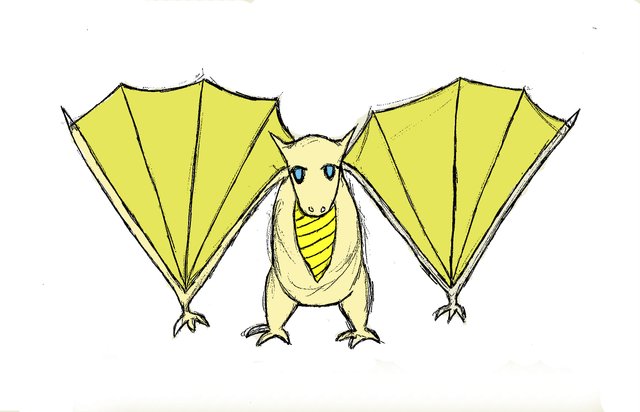
Its short sturdy wings do not allow for long distance flight however this ferocious dragon does not require a large territory. They usually live in small clouds of 3-4 fie and 1 bull. The Aodhfionn fie only bears a horde of 2 – 3 eggs once every 4 years. Whereas most dragons will lay their eggs in a nest, the Humo family of dragons bury their eggs under the earth. It appears the eggs can survive here in a dormant state for many years. Sometimes the dragon who laid the eggs will return to the area it buried them, and burn it down, however this measure seems to relate to attacks by other dragons on the cloud. The fire has been found to trigger the growth and hatching process. Fully formed baby dragons who are able to fend for themselves emerge weeks later. This strange reproductive method is thought to be an extreme survival technique as it ensures continuation of the species. If a cloud is attacked by larger predatory dragons, they will produce vast amounts of fire, often destroying entire areas of forest and wiping out the cloud. This fire then triggers the eggs to hatch weeks later when the predators have long gone, thus safeguarding the survival of the blood line.
Alaskan Black Horn (L. Alaska Furvus Bucina)
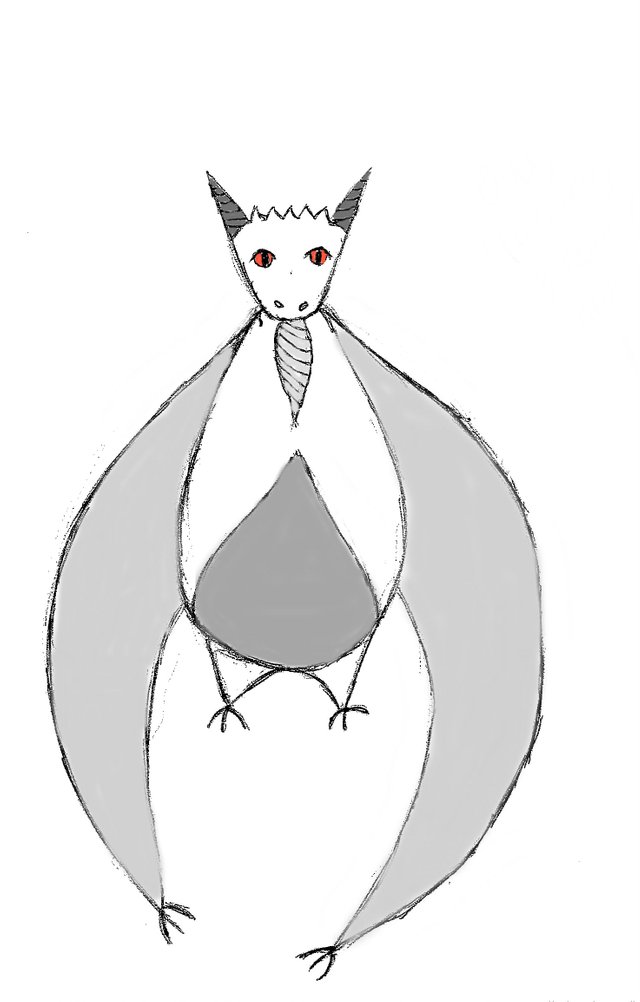
This distance relative of the Amazonian Black Horn was first discovered in the far reaches of Alaska in 1905, and has since been sighted on Russia’s frozen tundra. Scientists believe this dragon has lived in isolation from its Amazonian cousin for thousands of years. Fossil records indicating that a single breed of dragon used to migrate from one continent to the other. This has led to the popular belief these two breeds evolved from a single predecessor. The Alaskan Black Horn has a thick fur coat, normally white and grey in colour, providing perfect camouflage in the heavy snow. They normally live in small groups consisting of a single bull and two – three fie. Each group has its own hunting territory, although it is not unusual for these small groups to join together to form a cloud to roost in the mountain caves. It is believed this is both for warmth and security however this co-roosting promotes more rivalry amongst the males, making them more aggressive than their warm weather cousins. It may be because of this that the fie stay together in their collective cloud during the nesting season, leaving their male counterparts to hunt alone. Once the coo (young dragons) are able to fly, the fie will return to their respective bulls, and once again spend their days hunting in small groups. When they reach the age of 9, the coo will leave the comfort of their mothers, and venture out on their own, seeking their own small group. Generally, the Alaskan Black Horn lives 25-35 years, depending on weather conditions.
Amazonian Black Horn (L. Amazonio Furvus Bucina)
The Amazonian Black Horn, first discovered by explorers in the Amazonian jungle in 1764, is recommended for first time owners. They have a naturally good temperament, and mainly hunt small mammals in the treetops. Although there is fossil evidence to suggest these dragons used to be migratory animals, this has not been documented in recorded history.
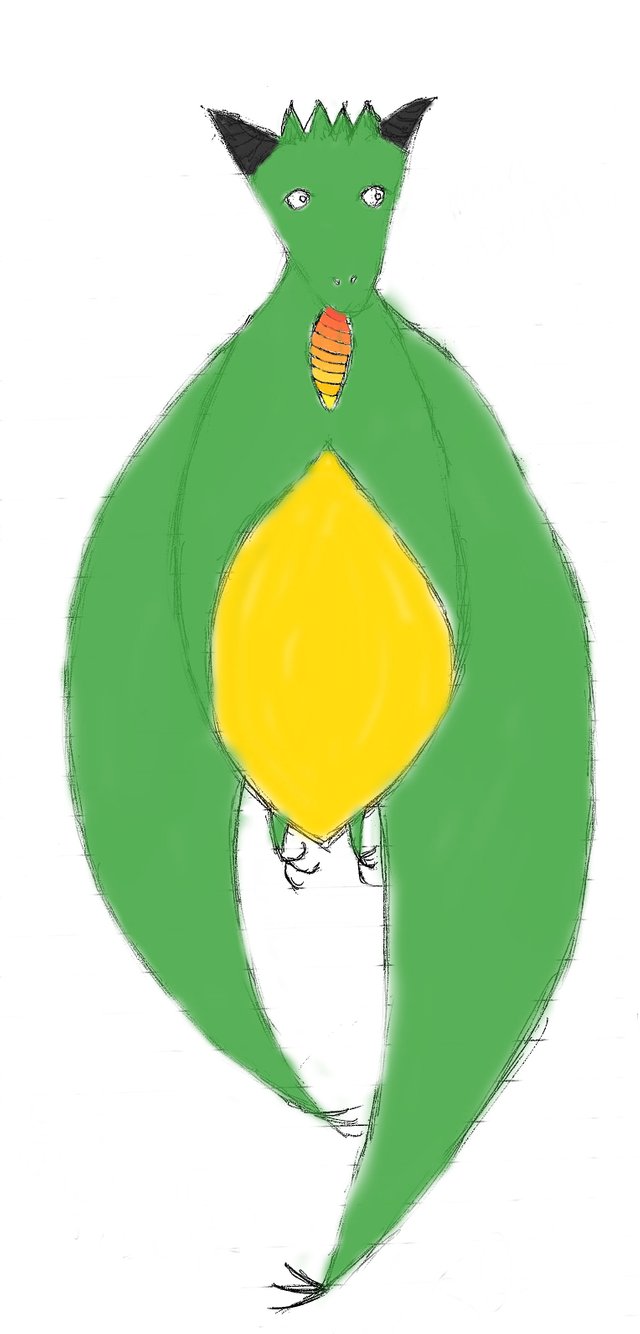
The Amazonian Black Horn was first bred in captivity just 5 years after the initial domestication and has been successfully bred ever since. Living for 30-45 years, they are the most suitable breed for keeping as pets. Their soft green felt like fur is highly prized for its lightweight, waterproof capacity. The Amazonian Black Horn is the least aggressive of the known dragon breeds, living in large social groups with a structured hierarchy. Generally groups consist of one dominant bull, as well as two or three “lesser” bulls, who fiercely protects a group of the smaller fie. Bulls will stay in this group until they reach maturity around the age of 9, at which point they normally leave the cloud to start their own. Unusually for animals living in groups, some of the younger females will leave with the males. These are usually offspring of the dominant male, whereas any females fathered by one of the lesser males, stay on as part of the cloud. Scientists believe this is not only a way of preventing inbreeding, but also a survival technique developed to help younger dragons establish their own cloud. The Amazonian Black Horn is in fact a mammal, giving birth to a horde of hairless tiny young once a year.
Berapi Mati (L. Concalfactorious Leto Humo)
This Asian member of the Humo family is widely regarded as the most dangerous. The largest and most established clouds of Berapi Mati have all been located in Indonesia, although this dragon has been sighted across Asia as far north as China. Normally found in clouds of 7-13, this highly territorial dragon will attack any intruders larger than a fox. The Berapi Mati is renowned for its beautiful colouring; its iridescent blue and green scales shimmer golden in the sunlight. As a result of this, it is believed it was hunted to the brink of extinction by our ancestors.
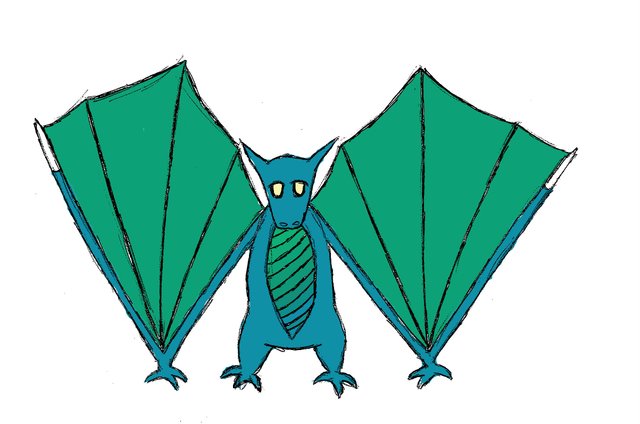
This brutal dragon may be beautiful but it is truly deadly. It’s has the greatest capacity for fire breathing out of all dragons studied. This is thought to be due to an abundance of arsenic in the pacific ring of fire, caused by regular volcanic activity. A single Berapi Mati can set fire to an area the size of a football field in a matter of minutes. Generally this particular dragon is considered unsuitable for domestication due the large amount of damage it can cause in a short period of time. In addition to this, the Berapi Mati requires a far larger amount of arsenic than most dragons, even when not producing fire. Usually this dragon is very social, living in small highly structured groups where each dragon will fight furiously for its position. Despite the dangers, people do still keep this majestic killer as a pet.
Chinese Sky Dragon (L. Seres Draco Caelum)
First recorded by mountain climbers in 1879, the Chinese Sky Dragon is believed to be the inspiration for a lot of eastern mythology. Similar in size to an adult crocodile, this dragon hunts a variety of birds. The boned nose of the Sky Dragon is heavily reinforced, allowing it to build up great speeds and collide with its prey, knocking them out of the air.
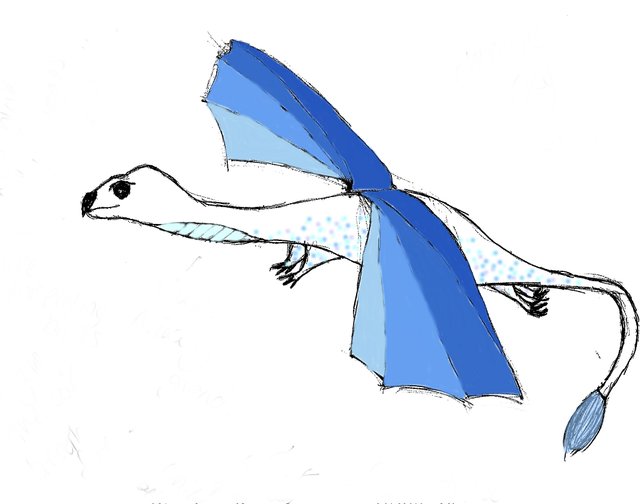
The Chinese Sky Dragon then folds up its concertina style wings and plummets to earth in a nosedive to catch the dazed bird before it impacts with the ground. Although not known for their aggressive behaviour, the Sky Dragon is highly defensive, and usually hatches it’s young all year round, making them very dangerous to approach. Mainly found living in the more remote and mountainous parts of China, relatively little is known about the habits of this reclusive dragon in the wild.
It is believed they live in small clouds of 7-11 dragons, hunting alone, but returning to the safety of the group to consume their prey. Recent observations by biologists have suggested that each cloud builds a single nest into which all eggs are laid, allowing fie to take turns to hunt and to incubate their young. Unlike the furred Black Horns, the Sky Dragons are oviparous, meaning their young hatch from eggs able to fly and defend themselves. Interestingly, eggs hatched in labs not only tend to turn out more aggressive, but display very different hunting behaviour, suggesting this mid-air collision followed by dive bomb is learnt through observation. Although Chinese Sky Dragons reared by hand bond well with their carer, they still tend to be more aggressive, and harder to train. This suggests that the co-operative behaviour observed in the wild is also learnt, which has led to a huge amount of speculation on the origin of this unusual dragon. It is suspected the Chinese Sky Dragon can live to at least 100 although those reared by hand are yet to pass beyond 52 years.
Desert Spine-tailed Night Stalker (L. Spina Cauda Tenebra Latro)
This particular dragon is renowned for its ferocious behaviour, living in vast expanses of desert; its low growl can be heard for miles across the dunes. The Desert Spine-tailed Night Stalker is a highly aggressive breed of dragon known for attacking anything larger than a sheep on sight. More recently, this dragon has been sighted on African Plains hunting everything from wildebeest to lions. Hunting at night, the Desert Spine-tailed Night Stalker has mainly black scaly skin with a heavy boned star like spike at the end of its tail. It is thought to nest in burrows dug in the sand dunes, although the remains of these huge burrows have been found, it has never been observed using them.
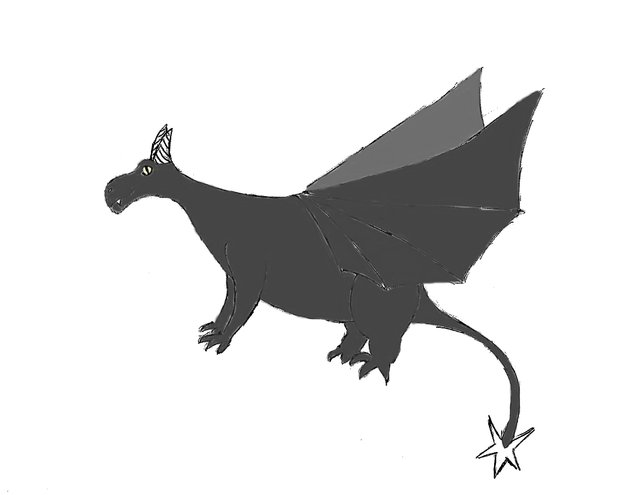
To date, scientists have only ever found the carcasses of females Desert Spine-Tailed Night Stalkers. Upon studying their anatomy, it has been determined that they are unable to reproduce asexually, leading to many theories regarding these dragons. The most popular theory is that they mate for life, and fie dig out huge burrows, in which they lay their young. Here the bulls are thought to live out their lives, caring for each coo, and relocating whenever the shifting dunes force them to. Another competing theory is that the bulls are far smaller, and entirely black in colour, making them nearly impossible to spot against the night sky.
The Desert Spine-Tailed Night Stalker is yet to be successfully kept in captivity although, according to African legends, there was a Shaman able to summon a huge black fire breathing dragon named Amma who had stolen a star from the sky for its tail and lived for a thousand years. The legend goes that at the birth of each Night Stalker a new Shaman is called, which has led to the belief by some people that these dragons are not born from flesh but from magic.
Norwegian Sky Heart (L.Noruegia Caelum Anima)
This was the first dragon documented in modern history, sighted by explorers in 1614. Some of the largest dragons found, they have been known to grow 20-30 foot in length. Although initially discovered living at very high altitudes, since then they have been sighted throughout Europe. They have very distinctive markings; their wings are typically pale grey/blue fading into a whiter chest with a dark grey heart-like shape between their forelegs. These huge dragons are omnivores, eating foliage, vegetation, and variety of small – medium mammals and fish.
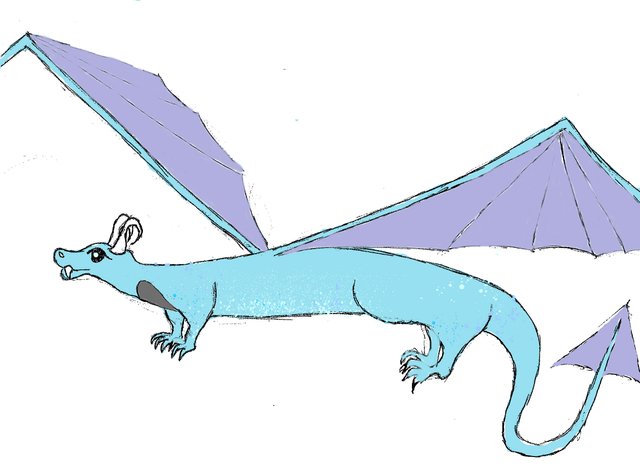
Although technically fire-breathers they are rarely observed in the act, this is thought to be due to their diets in the wild being quite low in arsine. Like the Chinese Sky Dragons, the Norwegian Sky Hearts are oviparous, laying red and grey eggs in huge nests spanning numerous trees. Growing to such a large size, and consuming it’s body weight in food most days, the Sky Heart is rarely domesticated although it’s trusting nature and lack of aggression does make it suitable for raising in captivity. The Norwegian Sky Heart mates for life, each pair will normally raise a horde of 2-3 young every five years. They will live in solitude until they find a mate, however once every year, hundreds of these dragons will gather above huge lakes for their intricate mating displays known as Ekte – Norwegian for true. Once they have found a mate, they will continue to return for subsequent Ektes to reenact their first weaving waltz. This is the only time this breeds has been observed interacting socially. If a dragon loses its mate, it will not seek another, and will no longer attend Ekte. There have been many documented cases in rural areas of people taming Sky Hearts who have lost their mate. In the wild, it has been observed that they will often seek the company of smaller animals. There has even been a case where a “widowed” Norwegian Sky Heart has befriended a small cat, an animal normally considered food.
Sky Hearts normally live 150-200 years, one of the greatest lifespans of any known dragon. The Norwegian Sky Hearts are one of the most popular breeds of dragon, with people moving to the mountain ranges in the hopes of befriending one who has lost their mate.
Oyohusa Atsila (L. Incaendium Interfectio Humo)
This member of the Humo family is only found on the west coast of South and North America. It lives in small clouds of 3-4 dragons, normally consisting of a single bull and his fie. Unlike other members of the Humo family, the Oyohusa Atsila hunts as a cloud, they employee herding techniques to trap their prey in a circle of fire. The Oyohusa Atsila mainly hunts mammals it encounters while nesting around dormant volcanoes.
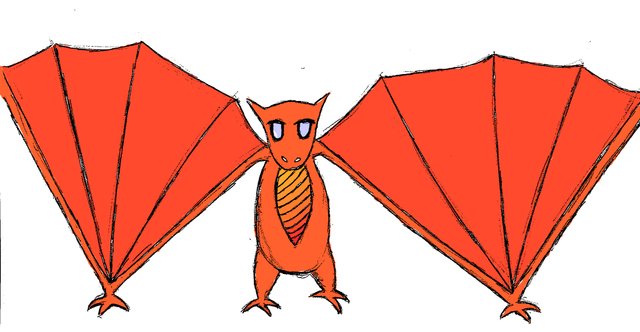
The Oyohusa Atsila has been worshipped in Native Indian culture as the Spirit of the Volcano for hundreds of years, they believed as long as the dragon did not go hungry, the volcano would not erupt. Believers still leave offerings at the base of volcanoes today. It has been speculated that the famous Great Pyramid of Cholula (originally called Acholollan, meaning place of flight) was one of the earliest temples to be built to this dragon. A “feathered serpent” or dragon, has been worshipped in many Mesoamerican cultures, leading to the belief this dragon originated in this area.
It’s bold colouring make this dragon highly popular as a pet although with a wingspan of up to 14 feet, it’s is not recommended for young or inexperienced owners.
Sea Dragon (L. Profundum Draco)
The only known flightless dragon, the Sea Dragon is an amphibian, able to live and breathe both on land, and underwater.
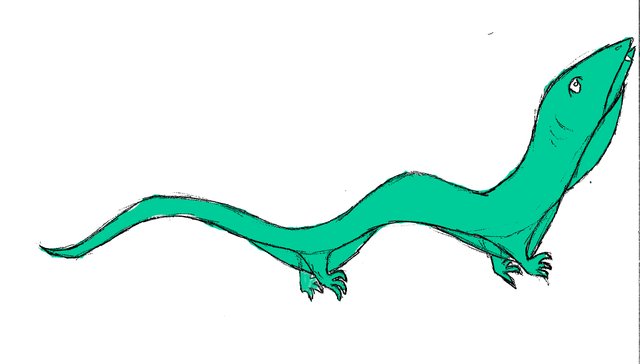
They are long and thin in appearance, and look more like giant snakes with legs, however a recent genetic study has revealed they are part of the dragon family. Their greenish/grey skin offers perfect camouflage, both underwater and on the river bank. The sea dragon lays its eggs in an underwater burrow, normally dug into the sand or mud of the shallows. There have been a few documented sightings of this worm like dragon appearing in streams. Although it does seem able to tolerate fresh water, it is usually found in salt water, only swimming up rivers in pursuit of huge spawning salmon. The Sea Dragon hunts larger fish, and has been seen to take on smaller sharks and whales. Their detachable bottom jaw and serrated teeth allowing them to consume their massive prey. This dragon has been kept successfully in zoos for the past 100 years, and breeds well in captivity. Unlike its counterparts who dominate the sky, this dragon does not breathe fire, and instead spits a form of highly corrosive acid.
Wind Chaser (L. Ventus Pressor)
The Wind Chaser’s are the second smallest known dragons; they rarely grow more than 50 cm in length. What they lack in size, they make up for in numbers, with mega-clouds known to reach a dizzying 200 strong. Despite living in such a large group, Wind Chasers lack the social hierarchy found in the more manageable Black Horns, making them much harder to domesticate. Studies have found that within each mega-cloud, each Wind Chaser competes for food, space and mating rites.
It has been documented that Wind Chasers will form close relationships with no more than 4 or 5 other dragons with in the cloud, normally those who fly alongside them. The tight flight formation of the Wind Chasers allows them to hunt at great speeds as well as giving them the appearance of dark clouds from a distance, and a larger predator up close. It is thought that each dragon tracks the movement of the dragon to either side of it, as well as front and behind. This enables the whole cloud to move as a single unit, avoiding larger predatory dragons, and hunting down prey. Wind Chasers tend to hunt larger birds, such as gulls, and land mammals, including cats, foxes, and even in some documented cases, smaller horses. They are able to hold their breath for nearly 5 minutes, allowing them to dive into the water, snatching fish from swarming shoals. This adaptability is what has enabled this small and relativity defenceless dragon to survive.
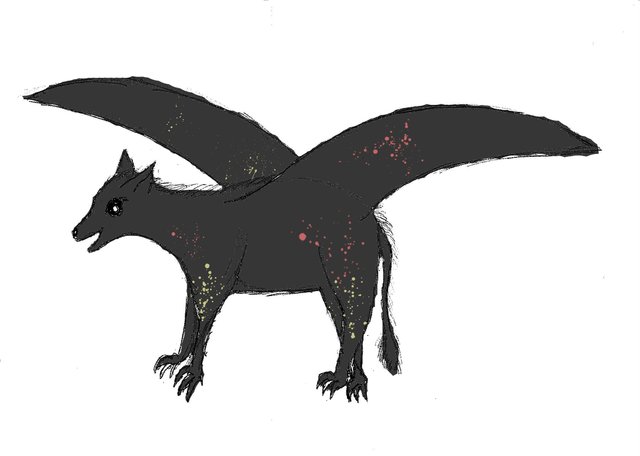
The Wind Chaser is a fire breather however it has never been observed doing this during hunting, it appears to be a last defence. This is thought to be because the comparatively low arsenic intake of the Wind Chaser does not allow for much arsine production. Wind Chasers are normally a dark grey charcoal colour, with bright flashing eyes, and a splattering of colours unique to each individual.
This dragon is highly popular due to its small size and pleasing appearance however they are one of the harder breeds to train due to the total lack of social structure within the cloud. Wind Chasers Mega-Clouds will return to the same nesting spot once every two years to breed. Each fie in the cloud will build their own nest, whilst bulls compete for their attention overhead. Once the fie has completed her nest, she will use it as a vantage point to observe the performance by the bulls. She will not leave the nest until her eggs have hatched so she must be confident her partner will be able to provide for her over the coming weeks. From here the fie will select her mate, this is done by calling out to him, he responds by swooping in past her. Normally after the 5th or 6th pass, the bull will circle round, and nest alongside his mate.
Winged Terror (L. Alifer Metus)
Estimated to be one of the oldest breeds of dragon, and the possible inspiration for Egyptian Sphinxes, this dragon was not recorded until 1955. Entirely nocturnal, the Winged Terror hunts at night and nests in a burrow during the day. Winged Terrors live in solitude, seeking out a mate in early spring, before the fie leaves to raise their horde alone. They are estimated to live up to 70 years, with coo reaching maturity at the age of 7. A fie Winged Terror will bear a horde of 1-2 dragons every four years, meaning it is quite common for a fie to have two hordes at once. This is thought to enable to the Fie to leave her younger horde safe with the older horde whilst she hunts.
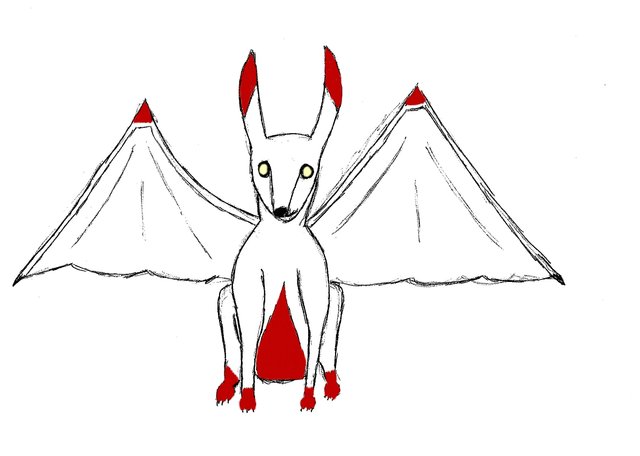
The Winged Terror, mainly found in Europe, hunts silently for small nocturnal mammals and roosting birds. Its long pointed ears allow it an excellent hearing range; this combined with its heat sensitive vision make this dragon a formidable hunter. Initially poached for its soft velvet fur, the Winged Terror is generally wary of humans, and prone to a more nervous temperament. One of the hardest dragons to tame, or even hand-rear, it is not advisable for first time owners, however the unfailing loyalty of this particular breed does make it worth the effort. Winged Terrors have been known to risk their lives to rescue their owners. Despite this, the Winged Terror lives up to its reputation, only the size of a large dog, this dragon has been known to attack and kill strangers who come too close to their burrow. The fie Winged Terror is black and white in colouring, however the bolder bull is bright red and white making it highly sought after.
Wisp (L.Volito)
Mainly found around moorlands, swamps and wetlands, this tiny dragon rarely grows to more than 10cm in length. Its tiny body is covered with hundreds of iridescent scales that give it the appearance of luminescence as it flits through the sky.
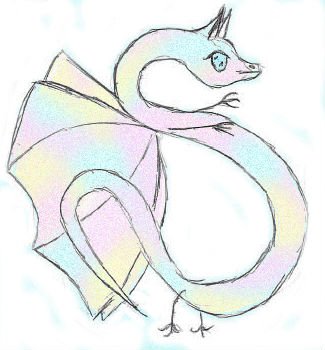
Glossary
ABC - Approved Breeders Certificate
Bull - Male dragon
Cloud - Term for a number of dragons, normally living in a group
Coo - Young dragon
Fie - Female dragon
Horde - Litter of baby dragons
LABS - Lineage Association Breeding Scheme
Mega-Cloud - A cloud of more than 50 dragons
Mesoamerica - the region that included southern Mexico, Guatemala, Belize, El Salvador, western Honduras, and the Pacific lowlands of Nicaragua and north-western Costa Rica.
Osteoblasts – Bone forming cells
Oviparous - An animal that lays eggs
Pyrophoric – A substance that ignites upon contact with air, or when cooled below 54.44 Celsius
Viviparous - An animal which gives birth to live young

So this is part one of my very long guide for keeping pet dragons. This started as a notes guide for a story I never finished, but grew into a full blown book. It has taken me quite a while to reformat this part for steemit, I have quite a few chapters still to convert. Like all good animal keeping guides, this book goes into detail. The parts yet to come looks at Diet, Housing, Breed Characteristic's, Caring, Training & Bonding, The Law, Games, Breeding & Hand Rearing, Understanding Your Dragon and finally Illness. My intention was to create something that wouldn't look out of place with other animal husbandry books at a shop. Sadly my inability to draw let's me down, but I haven't let that stop me. Hopefully one day I will find someone willing to illustrate this for me.
If you could keep a pet dragon, which one would you want? The unfinished story that inspired this was about a child who rescued a baby winged terror.
Thank you very much for stopping by!
Love and Sparkle ~ Calluna
This post was shared in the Curation Collective Discord community for curators, and upvoted and resteemed by the @c-squared community account after manual review.
Thank you very much!
This post has been selected for curation by @gmuxx, has been upvoted with the @msp-curation account, and is featured in @GMuxx's weekly fiction curation post.
It will also be considered for the official @minnowsupport community curation post and if selected will be resteemed from the main account.
Feel free to join us in the Minnow Support Palnet Discord!. For editing help and writing assistance consider joining The Writers' Block Discord server.
Wooo thank you so much! I really didn't think this would catch at all on here so I really appreciate it <3
This. Is. Epic! Like I was living an entirely new version of our world, hoisted away on winds of fantasy as I read. I absolutely love how detailed you are in the catalogue and that you've researched so much to make plausible fantasy! Can't wait for the next parts.
Oh my word! I was totally speechless when I saw this, this means so much coming from you! It was months of research when I wrote it, I just really enjoyed making it as real as I could. I really went off on a tangent from my original story but it was just so fun to try to overlay reality with fantasy. I really love writing things like this, I like the idea of being able to make something that could fool future archaeologist! Sincerely, thank you so so much! <3
I am working on converting the next bits at the moment, but I have a contest to get on with so it may be another week or so before I get part 2 up :)
You're most welcome! Would be pretty cool and funny to have a future archaeologist think it real, lol. Look forward to it when you can.
Wow, this is a pretty cool piece of writing, so fun and well done!